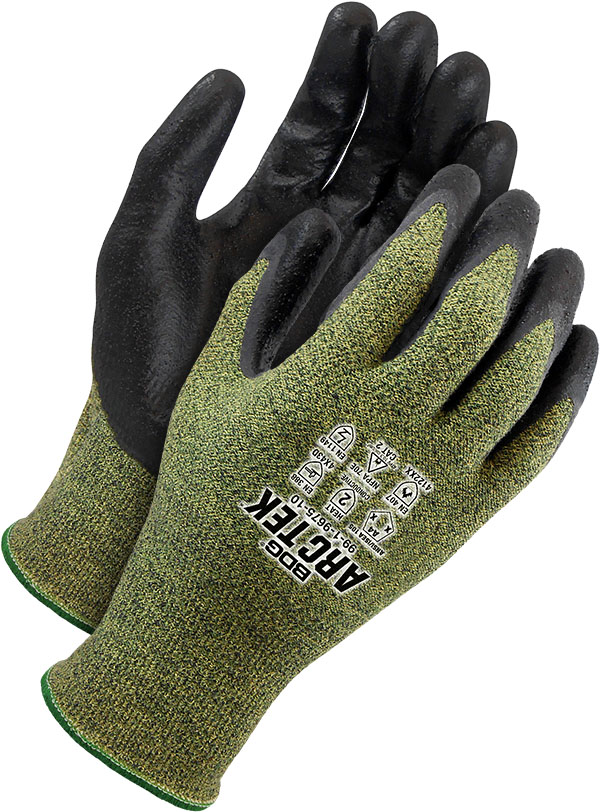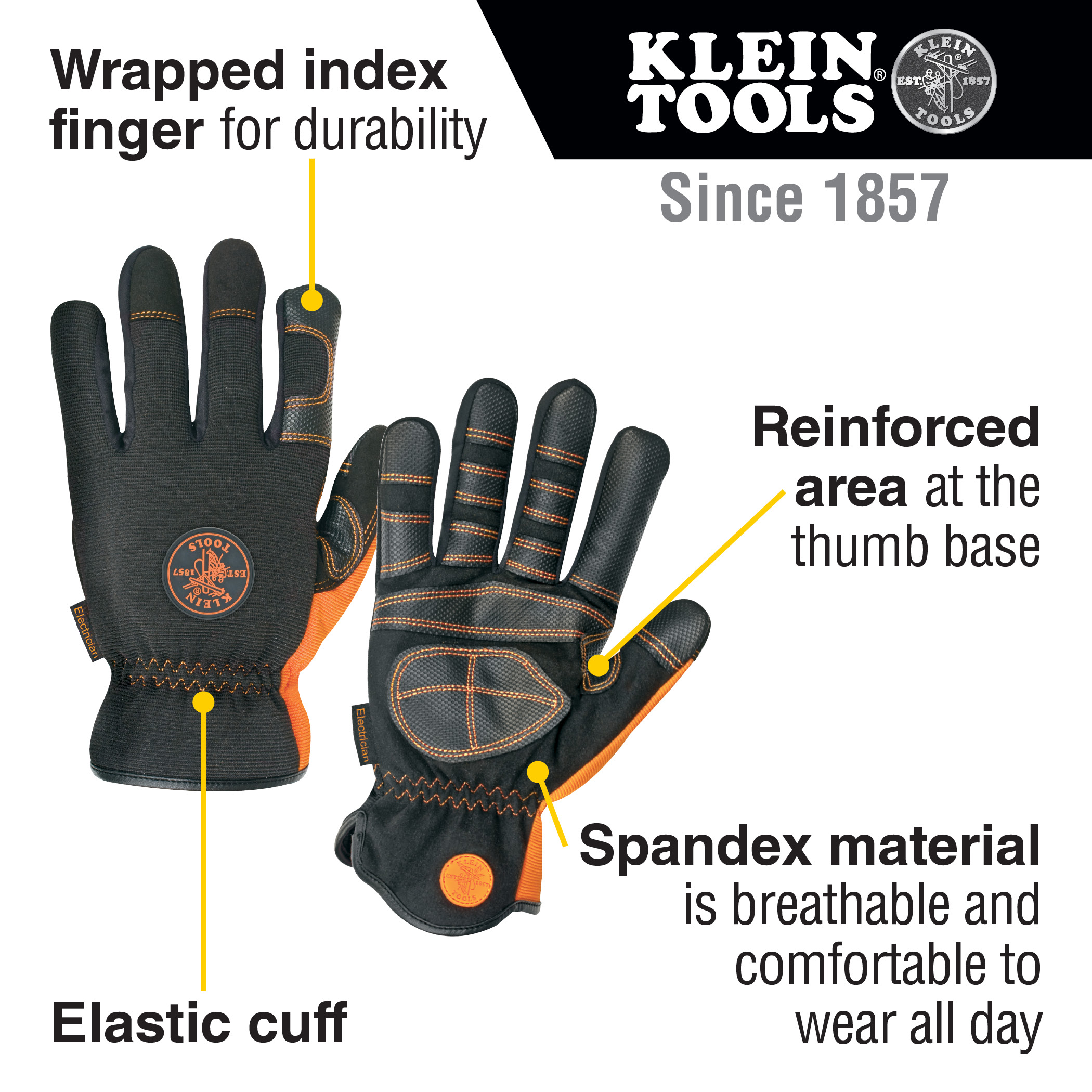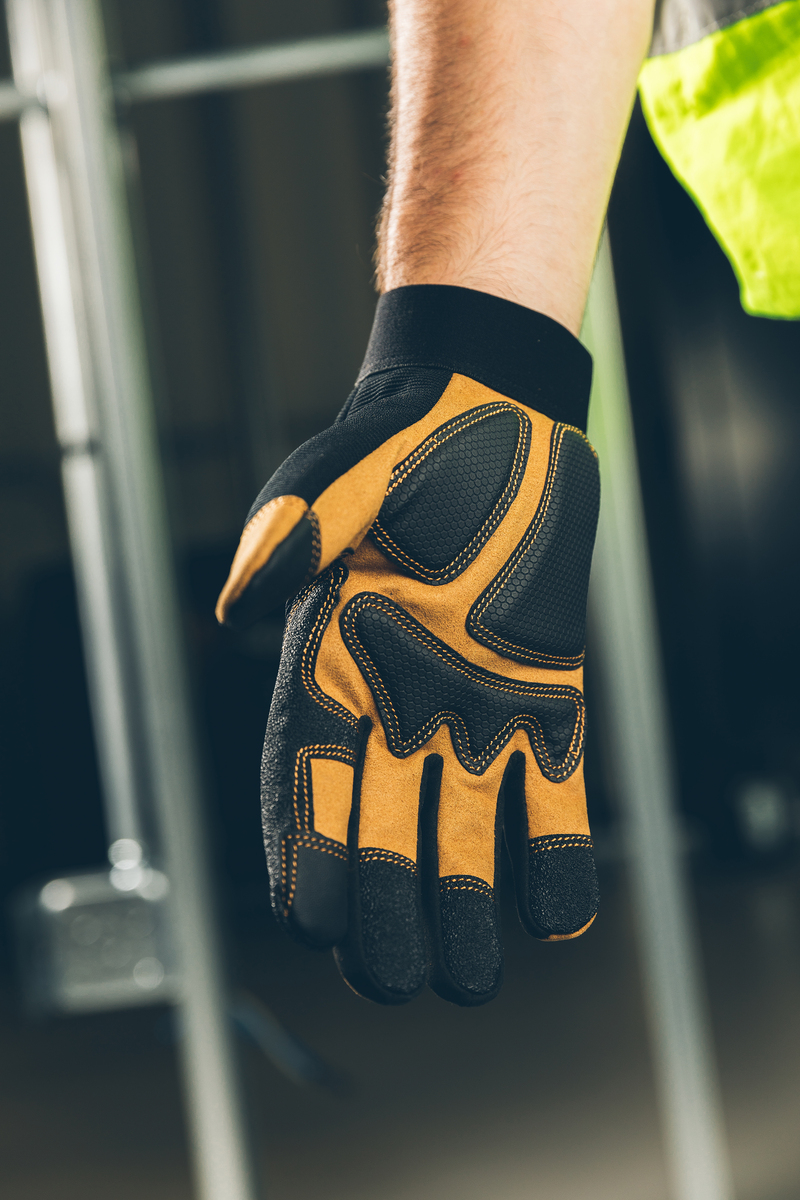Electricians gloves provide essential protection against electrical hazards. They ensure safety and prevent electric shocks.
Electricians face significant risks daily. Wearing specialized gloves can make a crucial difference. These gloves are designed to insulate and protect against high voltages. They come in different classes based on the level of protection needed. Proper fit and material quality are essential for effectiveness.
Always inspect gloves for damage before use. Regular testing and maintenance ensure continued safety. Investing in high-quality electricians gloves is a wise decision for anyone working with electricity. They not only protect lives but also enhance work efficiency. Make safety a priority with the right protective gear.

Credit: www.bobdalegloves.com
The Critical Role Of Electricians Gloves
Electricians work with high-voltage electricity every day. Their safety depends on the right equipment. One essential tool is electricians gloves. These gloves protect their hands from dangerous shocks and burns.
Shielding Hands From Electrical Hazards
Electricians gloves are like shields for hands. They block electrical currents. This prevents electric shocks. The gloves are made from special materials. These materials stop electricity from passing through.
Electricians gloves come in different types. Some are for low voltage. Others are for high voltage. All types offer protection against electrical hazards.
Types Of Injuries Prevented
Electricians gloves prevent many types of injuries. Here are some examples:
- Electric shocks
- Burns from electrical arcs
- Cuts from sharp tools
- Abrasions from rough surfaces
The gloves also protect against chemical burns. Electricians sometimes work with chemicals. These can harm the skin. The gloves provide a barrier.
| Injury Type | Protection Provided |
|---|---|
| Electric Shocks | Insulating materials stop current flow |
| Burns | Heat-resistant materials |
| Cuts | Reinforced with tough fabric |
| Abrasions | Rough surfaces protection |
| Chemical Burns | Chemical-resistant coating |
Electricians gloves are vital for safety. They protect against many dangers. This allows electricians to work confidently.
Key Features Of High-quality Electricians Gloves
Electricians gloves are essential for safety. They protect against electrical hazards. High-quality gloves offer superior protection and comfort. These gloves have specific features that make them stand out. Below are the key features of high-quality electricians gloves.
Material And Design Specifications
The material and design of the gloves are crucial. High-quality gloves use durable materials. These materials include rubber, leather, and synthetic blends. Rubber gloves provide excellent insulation. Leather gloves offer durability and abrasion resistance. Synthetic blends combine the benefits of both rubber and leather.
| Material | Benefits |
|---|---|
| Rubber | Excellent insulation |
| Leather | Durability and abrasion resistance |
| Synthetic Blends | Combination of insulation and durability |
The design includes ergonomic features. These features enhance comfort and usability. High-quality gloves have textured surfaces for better grip. They also have reinforced fingers and palms for added protection.
Insulation And Flexibility
Insulation is a key feature of electricians gloves. High-quality gloves provide excellent electrical insulation. This protects against electrical shocks and arcs. The insulation materials are tested to meet safety standards.
- Rubber gloves offer high voltage protection
- Leather gloves provide low voltage protection
- Synthetic gloves balance insulation and comfort
Flexibility is another important feature. High-quality gloves are flexible. This allows for better dexterity. Electricians need to perform precise tasks. Flexible gloves make it easier to handle tools and wires. They also reduce hand fatigue during long hours of work.
In summary, high-quality electricians gloves combine the best materials and design features. They offer superior insulation and flexibility. These features ensure safety and comfort for electricians. Choose gloves with these key features for optimal protection.
Different Types Of Electricians Gloves
Electricians need the right gloves for safety. There are many types of electrician gloves. Each type offers unique benefits. Choosing the right gloves is crucial for protection.
Rubber Insulating Gloves
Rubber insulating gloves are essential for electricians. These gloves protect against electrical shocks. They are made of durable rubber. The rubber acts as an insulator. Electricians wear them while working with live wires.
Rubber gloves come in different classes. Each class offers specific voltage protection. Here is a simple table:
| Class | Maximum Use Voltage |
|---|---|
| Class 00 | 500V AC |
| Class 0 | 1,000V AC |
| Class 1 | 7,500V AC |
| Class 2 | 17,000V AC |
| Class 3 | 26,500V AC |
| Class 4 | 36,000V AC |
Leather Protector Gloves
Leather protector gloves are worn over rubber gloves. They add an extra layer of protection. Leather gloves protect against cuts and abrasions. They also improve the durability of rubber gloves.
Here are some benefits of leather protector gloves:
- Increased durability
- Enhanced grip
- Protection from physical damage
Mechanics-style Gloves
Mechanics-style gloves are versatile. They are used for various tasks. These gloves are not for high-voltage work. They offer protection against minor injuries. They are made from synthetic materials.
Benefits of mechanics-style gloves include:
- Flexibility and comfort
- Good grip and dexterity
- Protection against cuts and scrapes
Standards And Certifications
Electricians gloves are crucial for safety. They must meet various standards and certifications. These ensure the gloves provide adequate protection.
Astm D120 Compliance
The ASTM D120 standard is essential for electricians gloves. It ensures the gloves are safe and reliable. These gloves must undergo rigorous testing. Tests include electrical resistance and physical durability.
- Electrical resistance tests
- Physical durability tests
- Regular inspections
- Proper labeling
Manufacturers must follow these guidelines strictly. This guarantees the gloves are safe for use.
En 60903 Regulations
EN 60903 is a European standard. It sets the requirements for electricians gloves. These gloves must protect against electrical shocks. The standard outlines various tests and checks.
- High voltage tests
- Mechanical strength tests
- Thermal resistance tests
- Regular maintenance
Gloves that meet EN 60903 standards are reliable. They provide excellent protection for electricians.
| Standard | Key Tests | Frequency |
|---|---|---|
| ASTM D120 | Electrical resistance, physical durability | Regular |
| EN 60903 | High voltage, mechanical strength, thermal resistance | Regular |
Proper Use And Maintenance
Electricians’ gloves are essential for safety. Knowing how to use and maintain them is crucial. Proper care extends their life and ensures maximum protection.
Correct Fitting And Sizing
Choosing the right size is vital. Gloves that fit well protect better. Follow these steps to find the correct size:
- Measure your hand circumference.
- Use a sizing chart to match your measurement.
- Try the gloves on to ensure a snug fit.
Gloves should not be too tight or too loose. They should allow finger movement without slipping off.
Care And Storage Guidelines
Proper care keeps your gloves effective. Follow these guidelines:
- Clean gloves regularly with mild soap and water.
- Inspect for damage before each use.
- Store in a cool, dry place away from sunlight.
Do not expose gloves to extreme heat. Keep them away from sharp objects.
Replace gloves if they show signs of wear or damage. Safety should never be compromised.
| Care Tip | Description |
|---|---|
| Regular Cleaning | Use mild soap and water for cleaning. |
| Damage Inspection | Check for cuts, holes, and wear before each use. |
| Proper Storage | Store in a cool, dry place. |
Following these tips ensures your gloves remain effective. Your safety depends on it.

Credit: www.kleintools.com
Glove Testing And Replacement
Electricians gloves are essential for safety. Ensuring they function properly is crucial. Regular testing and timely replacement keep electricians safe from electrical hazards.
Electrical Testing Frequency
Regular testing of electrician gloves is crucial. Testing frequency depends on usage and standards. Follow these guidelines:
- Daily Use: Test gloves every six months.
- Sporadic Use: Test gloves annually.
- Before First Use: Always test new gloves.
Avoid using untested gloves. This can lead to serious injuries.
Signs Of Wear And Damage
Check gloves for signs of wear and damage regularly. Look for these indicators:
- Cracks or Tears: Replace gloves with any visible damage.
- Discoloration: Faded colors can indicate material degradation.
- Stiffness: Gloves should remain flexible. Stiffness means they are deteriorating.
- Punctures: Even small holes can be dangerous.
Keep a close eye on these signs to ensure safety.
| Glove Condition | Action |
|---|---|
| Small tears or holes | Replace immediately |
| Faded color | Inspect and test |
| Stiff material | Replace immediately |
Regular inspections and tests ensure gloves offer maximum protection.
The Importance Of Layering
Layering is crucial for electricians’ safety gloves. It provides protection and comfort. This method uses multiple glove layers. Each layer serves a specific purpose. Inner liners enhance comfort, while outer protectors offer durability. Together, they ensure maximum safety and efficiency.
Inner Liners For Comfort
Inner liners are the first layer of electricians’ gloves. They are designed to be soft and comfortable. These liners are typically made from cotton or other breathable materials. They help absorb sweat and keep hands dry. This reduces the risk of slipping and ensures a firm grip.
Inner liners also prevent skin irritation. They provide a smooth surface against the skin. This is especially important during long hours of work. A good inner liner can make a significant difference in comfort. Comfortable gloves lead to better performance and safety.
Outer Protectors For Durability
Outer protectors form the second layer of electricians’ gloves. They are made from durable materials like rubber or leather. These protectors shield against cuts, abrasions, and electrical shocks. Durability is key to long-lasting protection.
Outer protectors are designed to withstand harsh conditions. They offer resistance to punctures and tears. This is vital for electricians working with sharp tools and materials. A strong outer layer ensures the gloves last longer, providing continuous protection.
| Layer | Material | Function |
|---|---|---|
| Inner Liners | Cotton/Breathable Materials | Comfort and Sweat Absorption |
| Outer Protectors | Rubber/Leather | Durability and Protection |
In summary, layering in electricians’ gloves is essential. Inner liners provide comfort and keep hands dry. Outer protectors offer durability and shield from hazards. Together, they ensure maximum safety and efficiency for electricians.
Choosing The Right Gloves For The Job
Choosing the right electrician’s gloves is crucial for safety and efficiency. Not all gloves are the same. They vary based on voltage ratings, work environment, and ergonomics. Below, we break down the key factors to consider.
Voltage Ratings And Work Environment
Electricians’ gloves come with different voltage ratings. These ratings determine the level of electrical protection. Here is a quick guide:
| Class | AC Voltage Rating | DC Voltage Rating |
|---|---|---|
| 00 | 500V | 750V |
| 0 | 1,000V | 1,500V |
| 1 | 7,500V | 11,250V |
| 2 | 17,000V | 25,500V |
| 3 | 26,500V | 39,750V |
| 4 | 36,000V | 54,000V |
Consider your work environment. Are you working indoors or outdoors? Is the area wet or dry? These factors impact the type of gloves you need.
Personalization And Ergonomics
Good gloves fit well and feel comfortable. Check the glove size chart before buying. Gloves should fit snugly but not be too tight.
Look for gloves with ergonomic designs. These gloves reduce hand fatigue. Features like pre-curved fingers and flexible materials improve comfort.
Consider gloves with added grip. This helps you hold tools securely. A textured surface or rubber coating can provide this.
In summary, choose gloves based on voltage ratings and work environment. Ensure they fit well and are ergonomic. These factors ensure safety and comfort on the job.

Credit: www.southwire.com
Frequently Asked Questions
What Gloves Should An Electrician Wear?
Electricians should wear rubber insulating gloves with leather protectors. These gloves protect against electrical shocks and injuries. Always choose gloves that meet ASTM standards for safety.
Why Do Electricians Wear 7 Gloves?
Electricians wear 7 gloves to ensure maximum safety. The layers protect against electric shocks, burns, and cuts.
What Are The Best Gloves For Electrical Wires?
The best gloves for electrical wires are insulated rubber gloves. They offer protection against electric shocks and are essential for safety. Always choose gloves rated for the voltage level you are working with. Ensure they meet industry standards like ASTM and IEC.
Why Do Electricians Wear Latex Gloves?
Electricians wear latex gloves to protect themselves from electrical shocks. Gloves also prevent cuts and abrasions.
Conclusion
Choosing the right electrician gloves ensures safety and efficiency. Prioritize quality and comfort for optimal performance. Stay safe, and protect your hands with top-rated gloves. Investing in reliable gear is crucial for every electrician. Make the smart choice and enhance your work experience.
Safety first, always.




